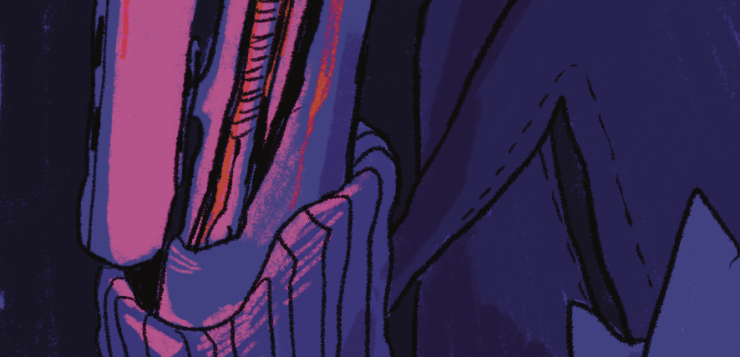There’s a certain milestone that feels attached to bionics. In the landscape of evolution, humans seem to be one of the quickest species to evolve, as natural selection’s “survival of the fittest” becomes more obsolete as a wider catalogue of genetic traits and differences breed themselves into society. As Gregory Cochran and Henry Harpending argued, human evolution is happening around 100 times faster than when it first started, but whether true or not, a new question begs to be answered: is bionics the next step in human evolution?
Bionics, cyber-enhancements, cyberpunk aesthetics, etc., all borrow from the idea of the integration of man and machine. It’s a sub-genre of literature that feels very much grounded in the technical fiction of the late 1940s and early 1950s, no doubt inspired by the technology boom that happened during the time. From there on, it grew in relevance, becoming a huge section of science-fiction as its roots spread into films like Blade Runner and RoboCop. Yet, man and machine feel less like fiction every day as we begin to question how we can augment the human body with machines and bionics. The pacemaker is already an excellent example of how technology can be used to enhance the human condition, but for the most part humans and technology only tend to become integrated when it serves a purpose like saving one’s life.
When we begin to move past the stratosphere of life-saving technology, the place for bionics quickly fades for most people. However, if we think about the bionics and tech-enthusiasts who are currently working in the sector, one name often sticks out: Elon Musk. The tech giant largely behind the success of Tesla is at the forefront of human bionics, most notably with his brain chip, Neuralink.
Neuralink is currently in the animal-testing phase and is in no shape the huge leap in bionics that we are sometimes led to believe. Neuralink won’t let you stream music to your brain, open doors by thinking about it, or let you stream thoughts to someone else’s Neuralink. As stated on the website, the initial goal of the technology is ‘to help people with paralysis to regain independence through the control of computers and mobile devices’ In a way, it serves the same medical functionality that the pacemaker was designed to serve – they’re both designed to be medical devices. However, how the Neuralink differs from the pacemaker (apart from one being attached to your brain, and the other to your heart) is its ability to be expanded upon. While Neuralink currently exists as a potential medical device, that doesn’t mean it will always be the case.
The possibilities for Neuralink, if ever successfully moving onto human trials and working, is practically endless. If the technology ever proves successful, it doesn’t only represent a quantum leap in our interaction with technology but it also represents a greater understanding of neurophysics, neurobiology, neurophysiology and even neuropsychology. To integrate arguably our most complicated organ with technology could be seen as an epitome of bionics, and the fact that Neuralink seeks to accomplish that even before any other breakthrough in bionics (apart from inserting tiny microchips into our flesh to unlock doors) is quite astounding. Neuralink is a technology that seems to have endless possibilities, but with those possibilities, comes endless fears.
There’s a reason cyberfiction often comes attached to dystopia: endless possibilities are open to both good and bad interpretations. While Neuralink seeks to help those with paralysis re-establish their independence, could it be reverse engineered or tampered with to maliciously hurt someone? Could Neuralink cause the breakdown of human interaction and communication, as it forces the world even closer to an exclusively technological, dare I say, metaverse? It all sounds like fearmongering speculation, but in technology as new and undetermined as Neuralink, speculation is all we have and know. As history shows us, just because something is invented with good intentions, doesn’t mean it’s never exploited for the opposite.
Yet, there’s a feeling of evolution attached to bionics. In a world that becomes increasingly reliant on technology to accomplish the most mundane of tasks for us, biological evolution seems less necessary. As the years pass by, it’s less about how humans can evolve to better suit the environment and more about how we can evolve the technology to make the environment better suit ourselves. As Neuralink represents, perhaps one day the evolution of technology and biology won’t be separated but instead integrated. Maybe one day, the next step in human evolution will be the newest piece of technology that sits on the market for consumerists to purchase. Whatever happens though, for good or bad, a technological world has an eerie shadow of a dystopian-world lurking in the background.




